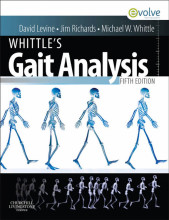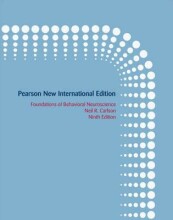Normal gait
40 important questions on Normal gait
What is the gait cycle?
What event marks the beginning of the gait cycle?
Name the seven events of the gait cycle.
- Initial contact
- Opposite toe-off
- Heel rise
- Opposite initial contact
- Toe off
- Feet adjacent
- Tibia vertical
- Higher grades + faster learning
- Never study anything twice
- 100% sure, 100% understanding
How many periods are there in the gait cycle, and in which phases do they occur?
What are the four periods of the stance phase?
- Loading response
- Mid-stance
- Terminal stance
- Pre-swing
What is the stride length?
What are the three periods of the swing phase?
- Initial swing
- Mid-swing
- Terminal swing
What is the walking base?
What is the speed of walking?
Hoe bereken je speed uit cadence en stride length? en met cycle time?
Speed(m/s)=stride length(m)/cycle time(s)
What percentage of the gait cycle does the stance phase approximately occupy? And the swinging phase?
During which events do the periods of double support occur?
What are the differences between young children and adults?
Stride length and walking speed are lower and cycle time shorter(higher cadence)
Small children no heelstrike
Very little stance phase knee flexion
External rotation whole leg during swing phase
Absence reciprocal arm swinging.
What is the walking base or stride width?
What is the function of decreasing stride length and widening walking base?
What are the three parts of energy cost in walking?
Muscles consuming energy keeping posture and for bodily functions
Basal metabolism
How is speed of walking measured?
In which ways can energy requirements of walking be expressed?
Energy used per unit distance.
How do you calculate energy cost per time or distance?
Em=2,23/v+1,26v-> Em= joules/metre/kg
What is step length?
Which two types of energy transfer occur during walking?
Transfer of energy between one limb segment and another.
How does a short step length on one side typically affect the other side?
What are the six determinants of gait?
2. Pelvic obliquity
3. Knee flexion in stance phase
4. Ankle mechanism
5. foot mechanism
6.lateral displacement of body
Which two phases are in place for initiation?
2. Stepping phase->swinging limb no longer in contact with the floor until initial contact
What is ankle angle?
How can the hip angle be measured?
In which planes do important movements occur during gait?
What occurs during the loading response period?
When does mid-stance occur in the gait cycle?
What event marks the end of the stance phase and the beginning of the swing phase?
What is the significance of "feet adjacent" in the gait cycle?
What marks the division between mid-swing and terminal swing?
When does the gait cycle end?
How do small children make initial contact while walking?
How does the leg position change during the swing phase in small children?
What is a notable difference in arm movement between small children and adults during walking?
When do the gait parameters of cycle time, stride length, and speed reach normal adult values in growth?
What are the main causes of gait disorders in old age?
What influences affect the gait of elderly people?
How does the gait of elderly people generally compare to that of younger adults? (excluding pathological conditions)
The question on the page originate from the summary of the following study material:
- A unique study and practice tool
- Never study anything twice again
- Get the grades you hope for
- 100% sure, 100% understanding
































